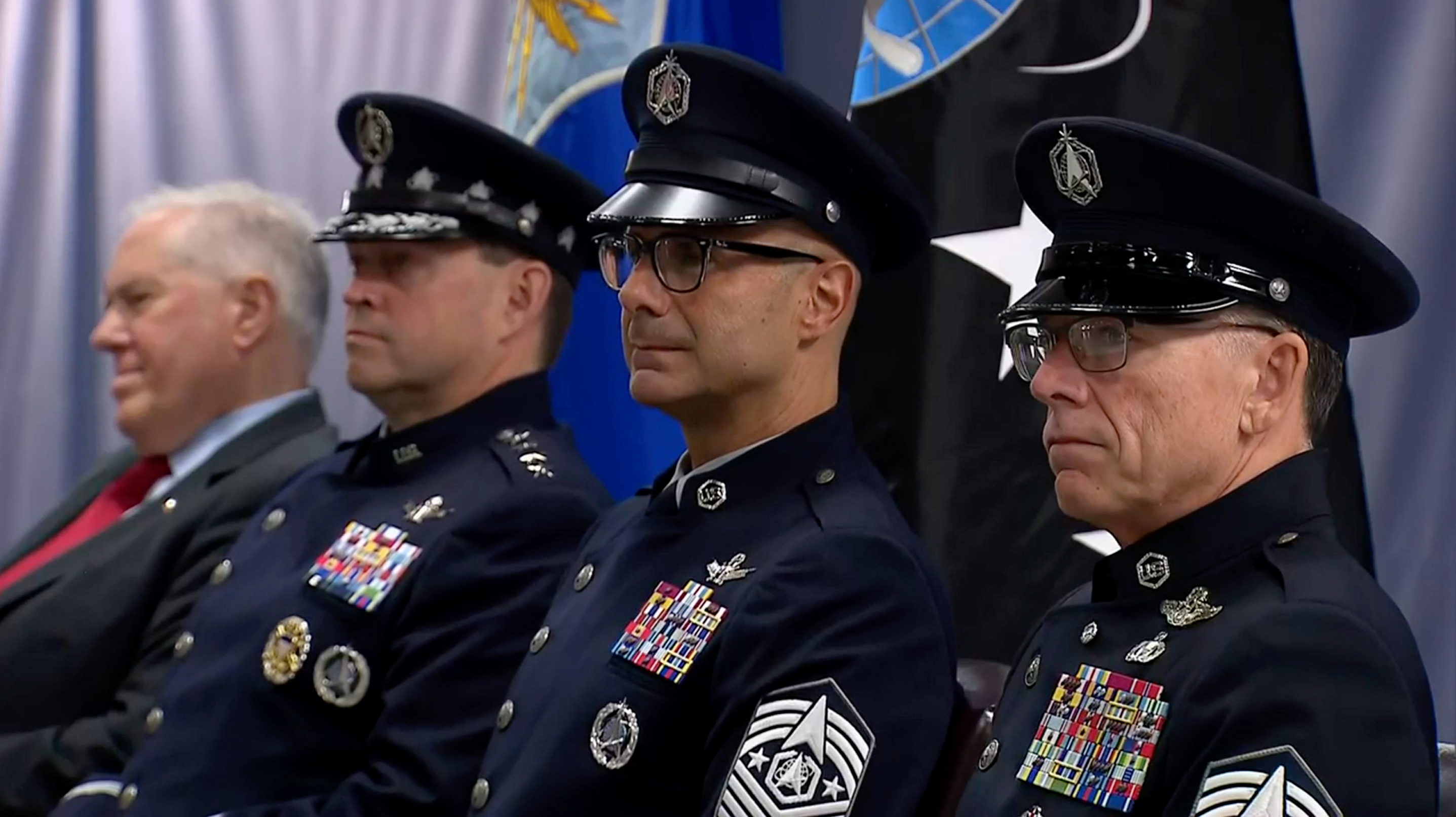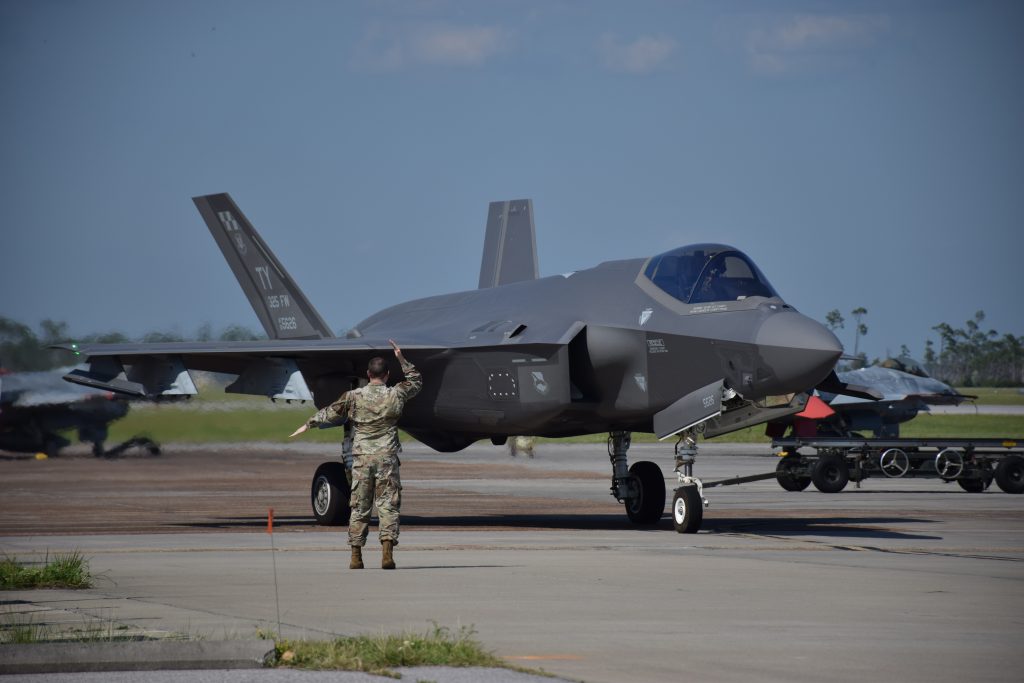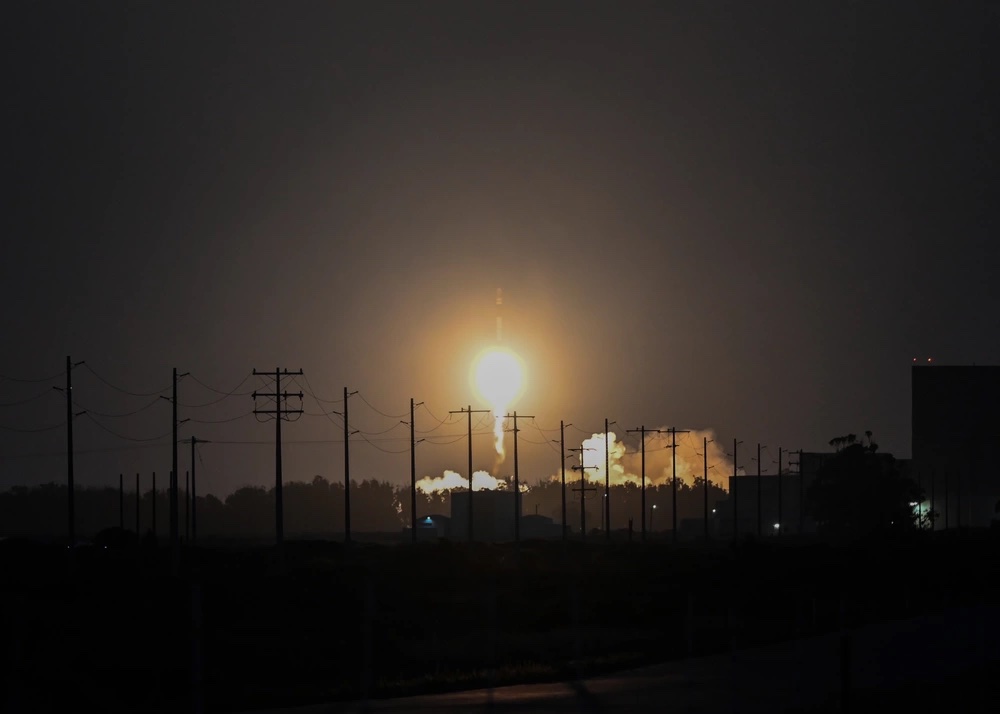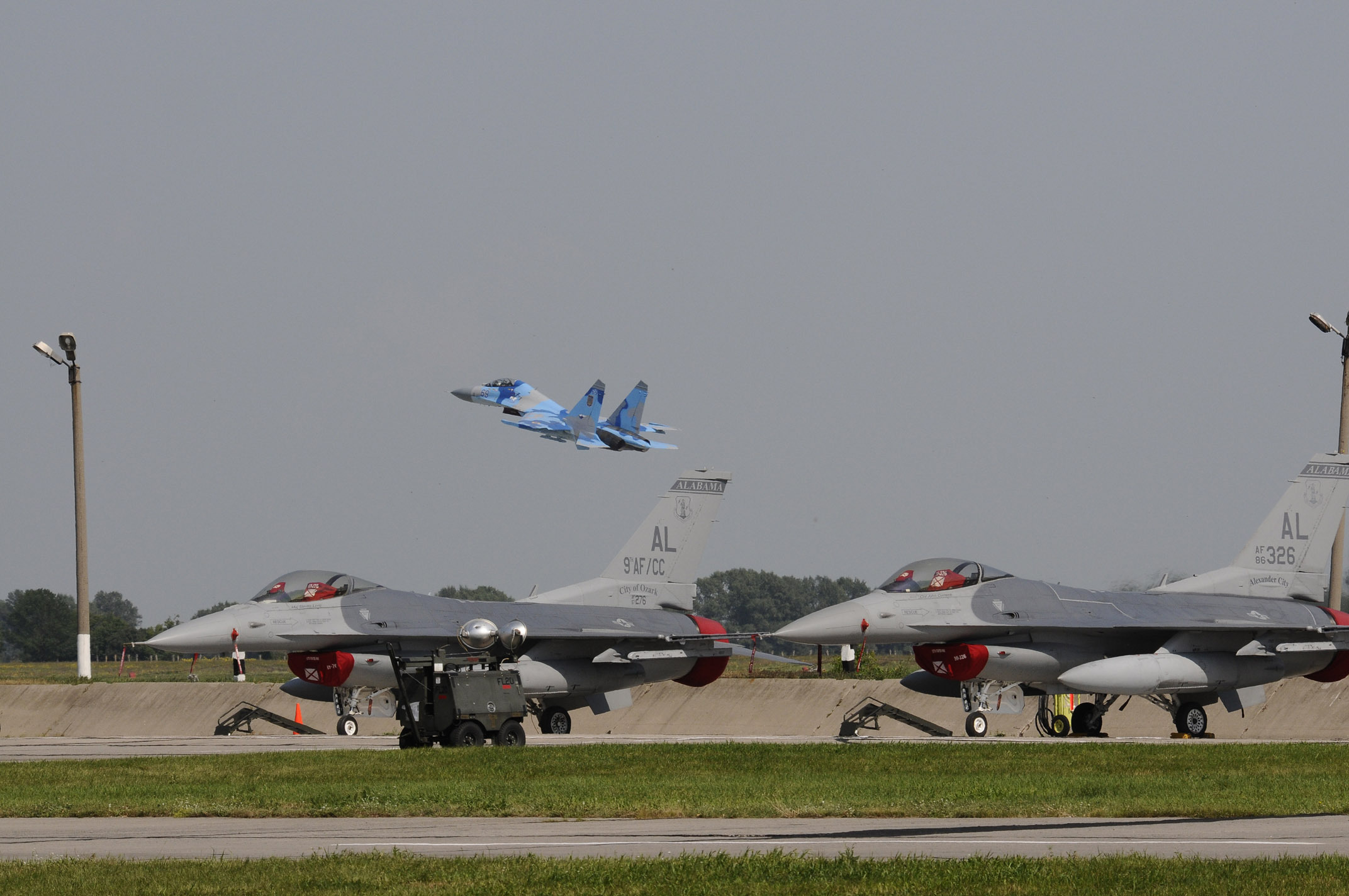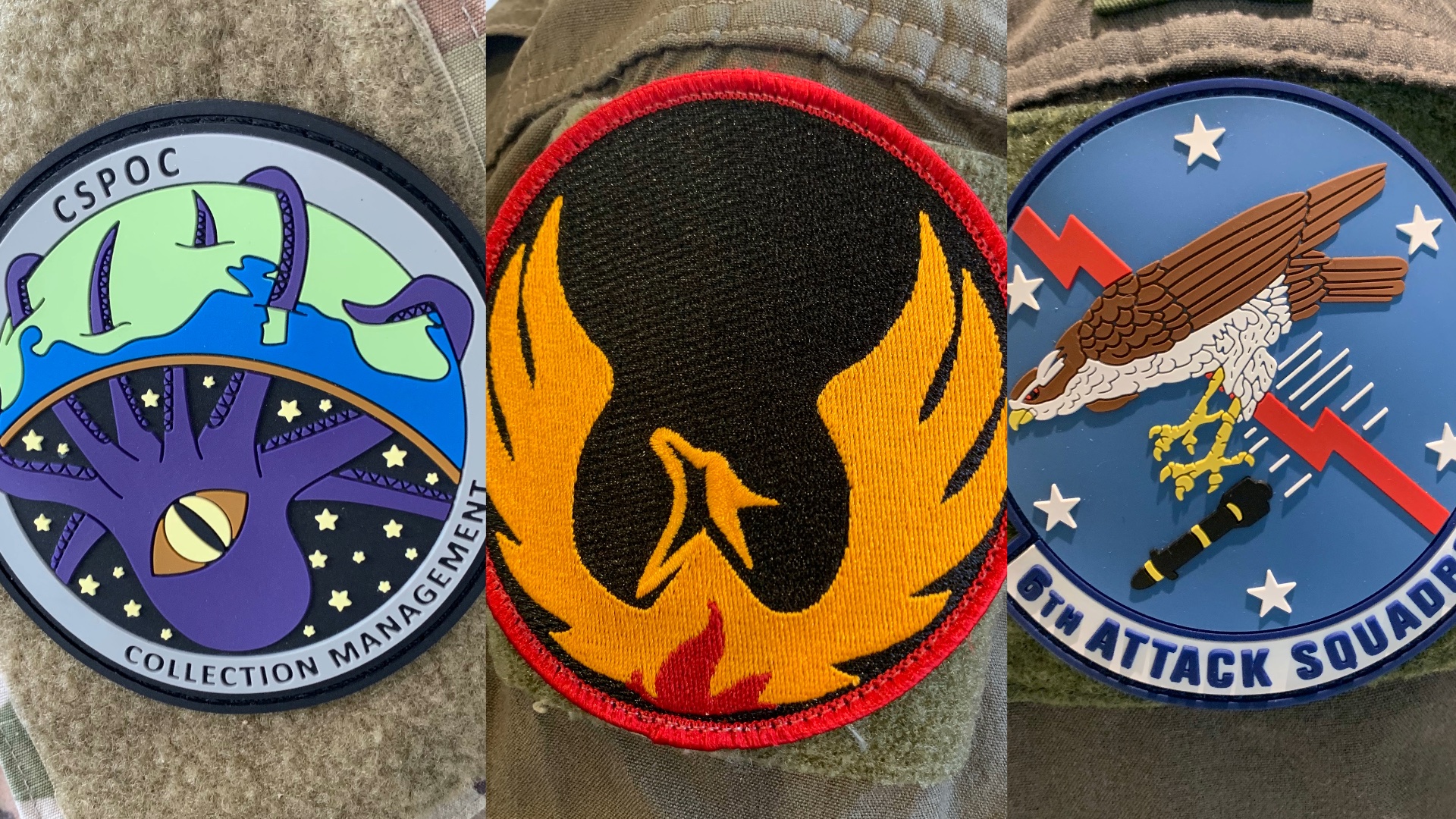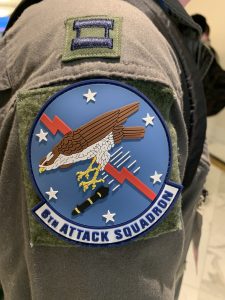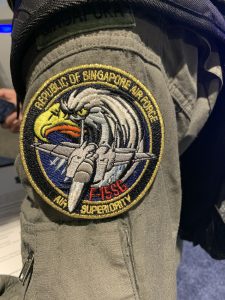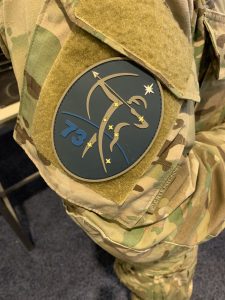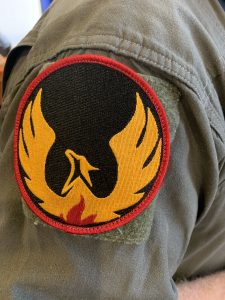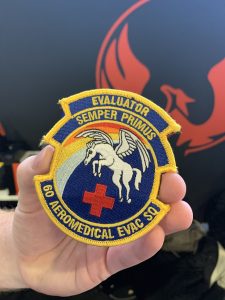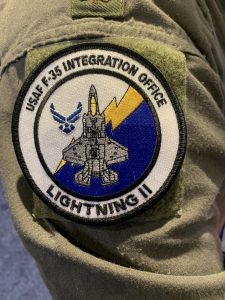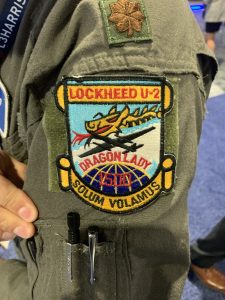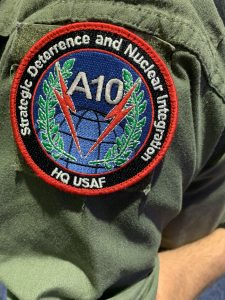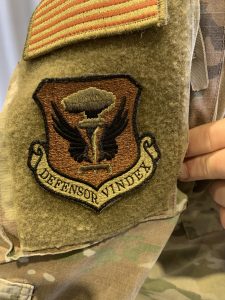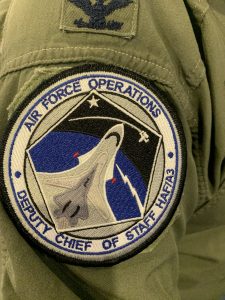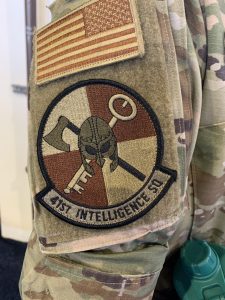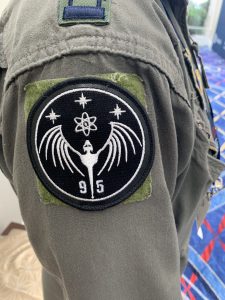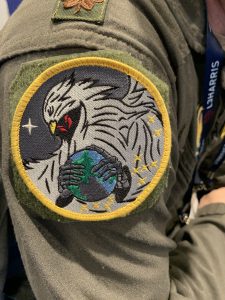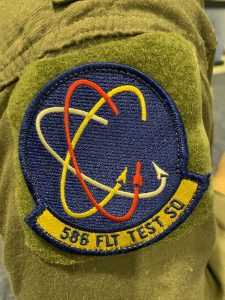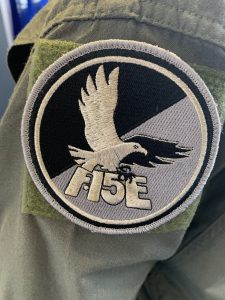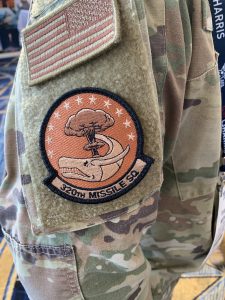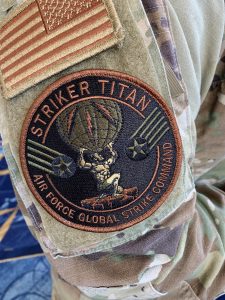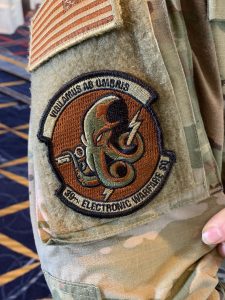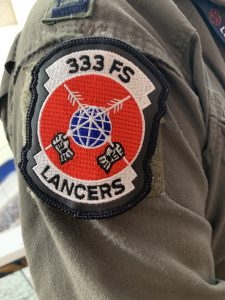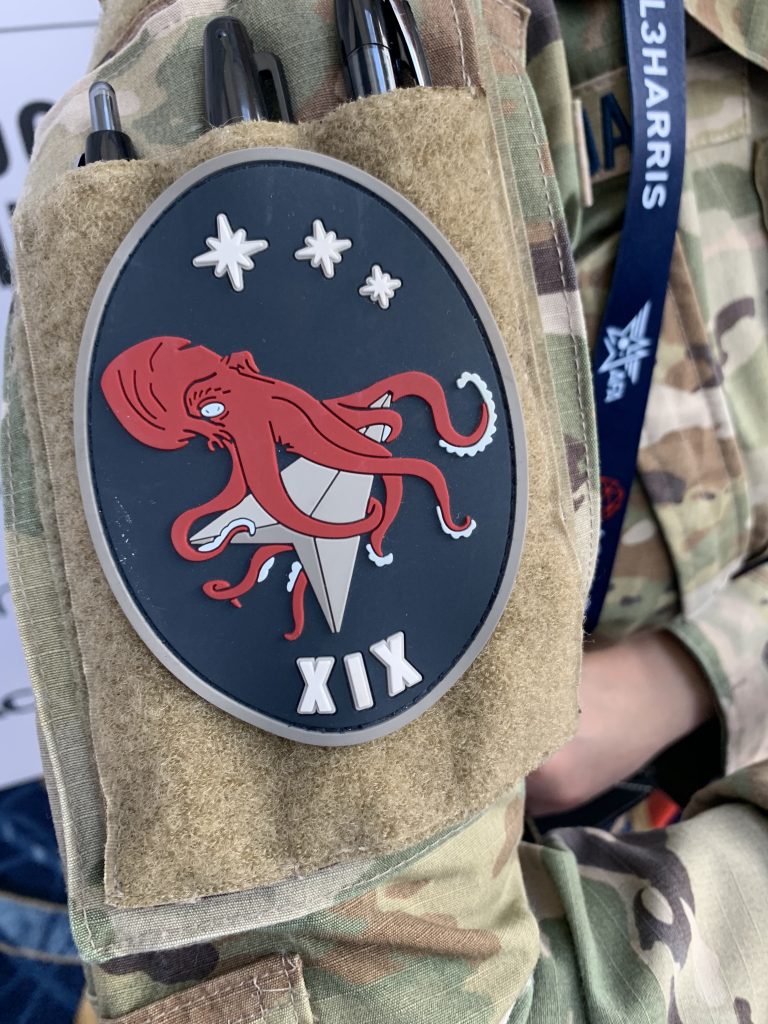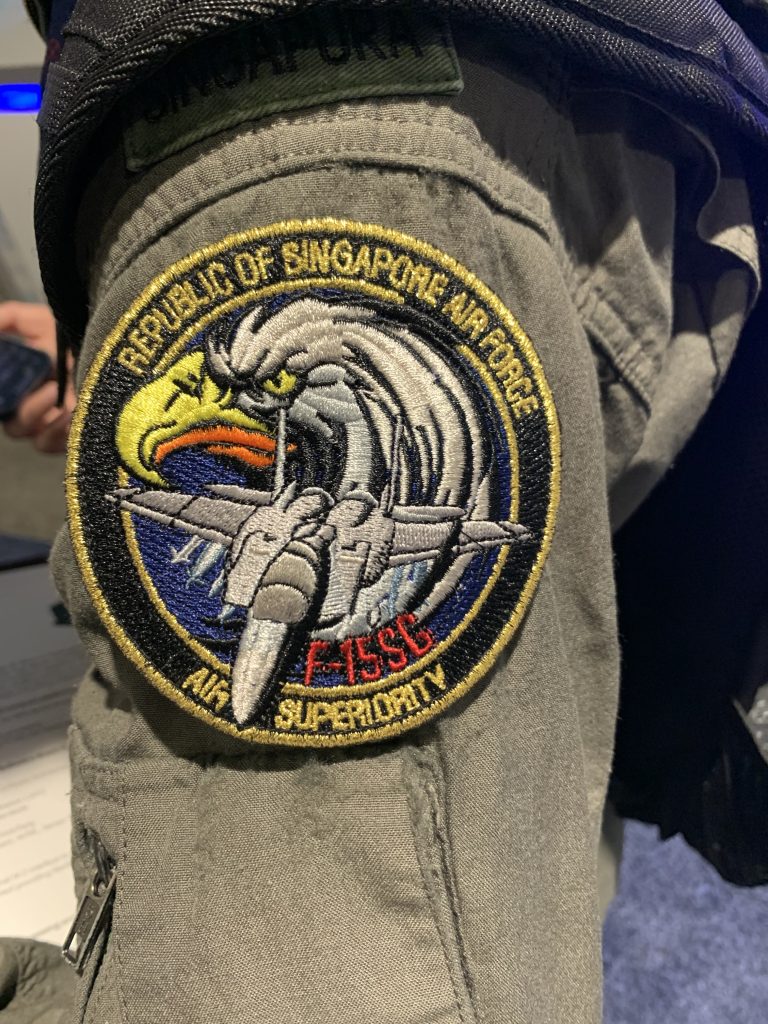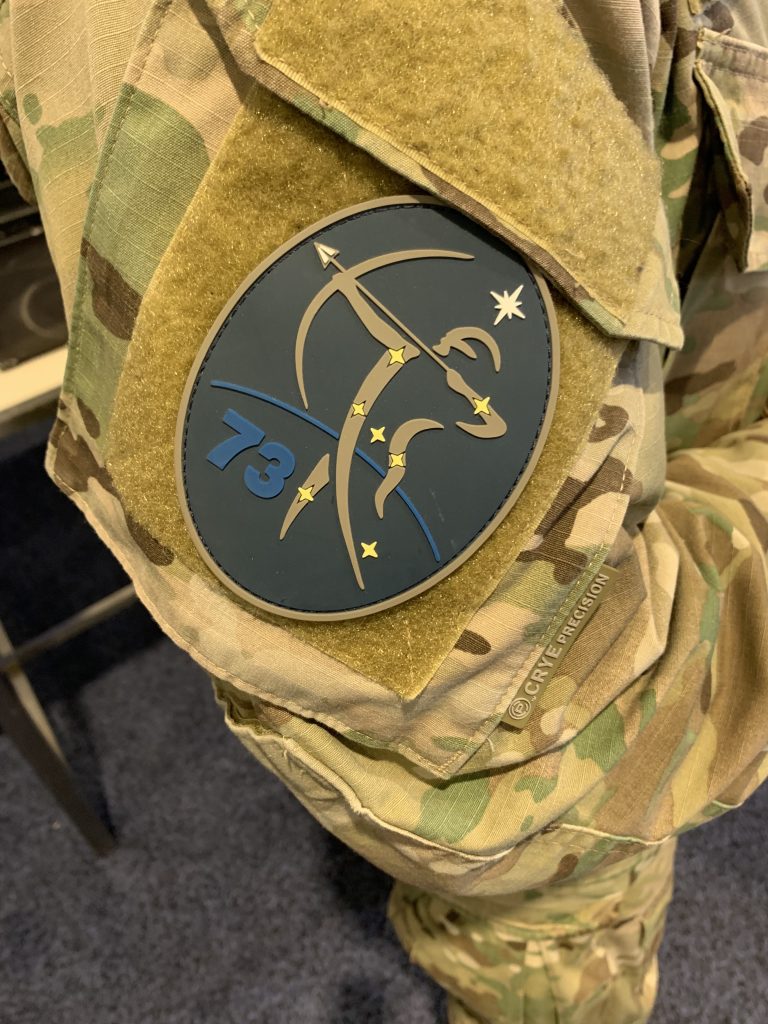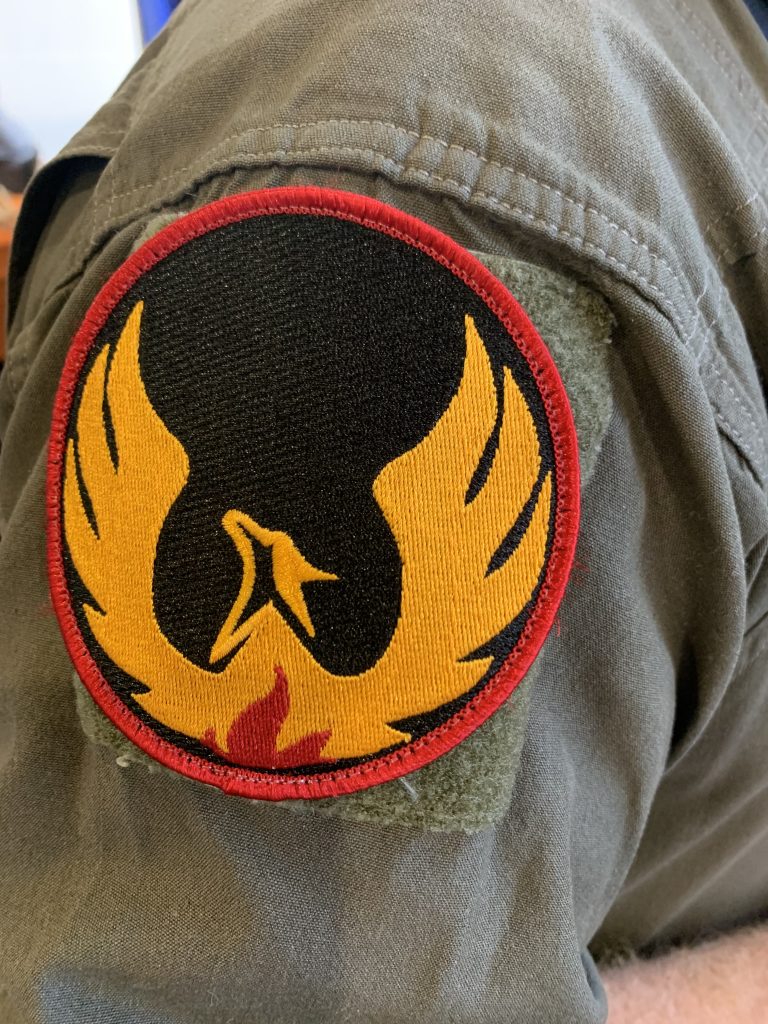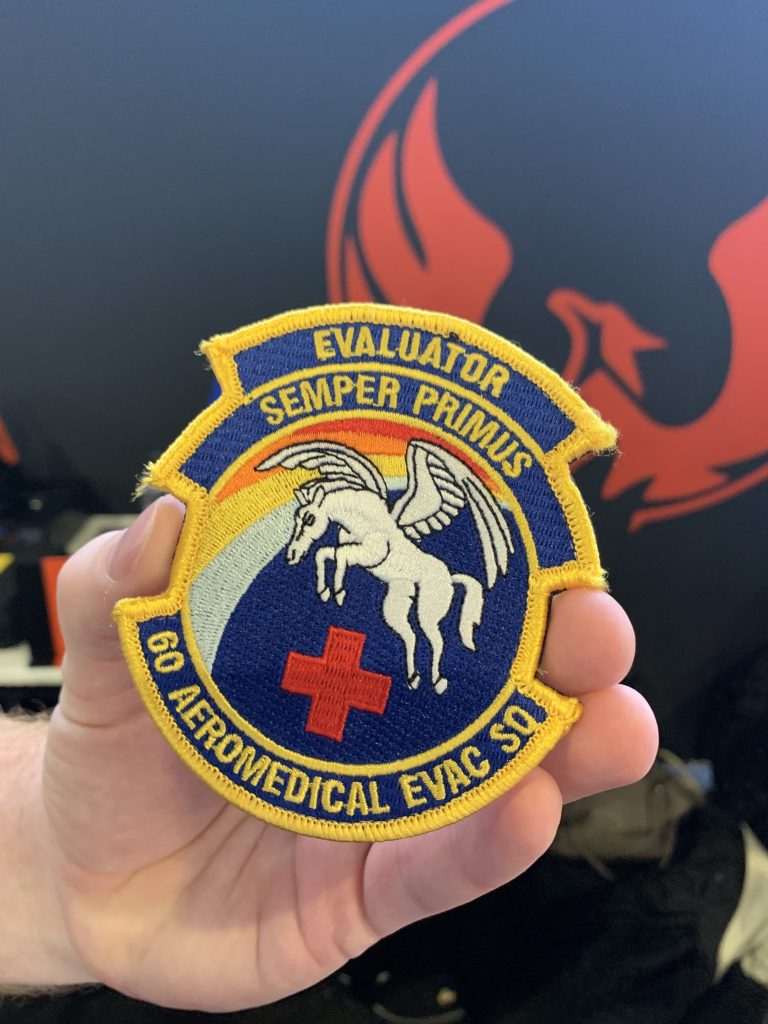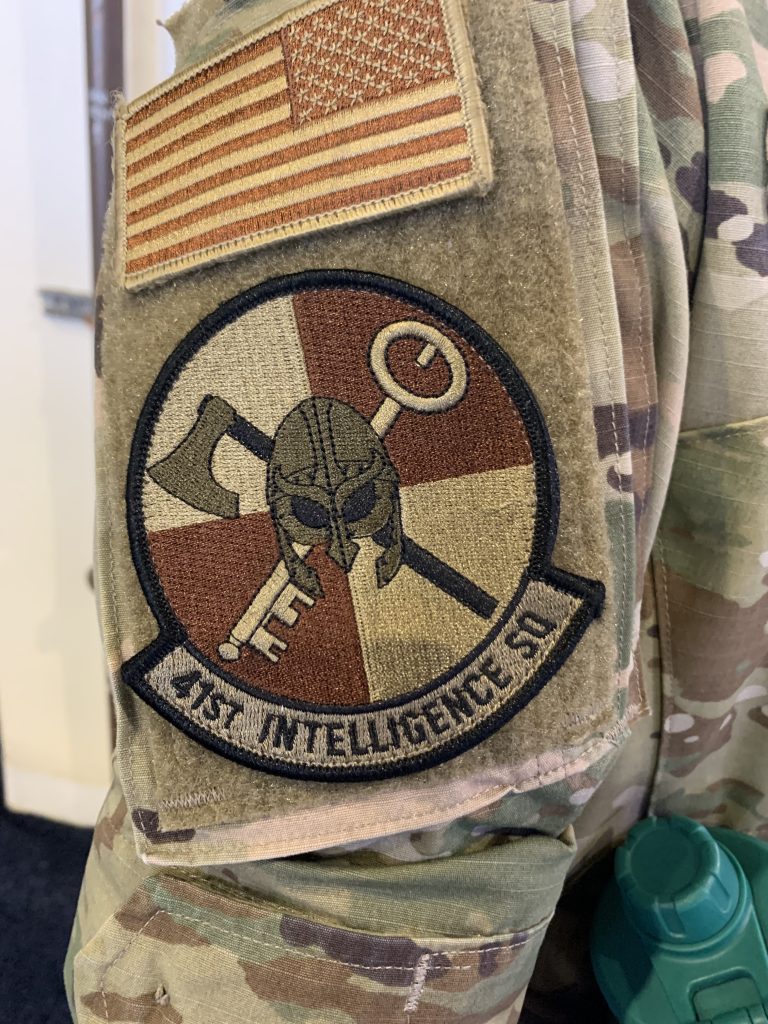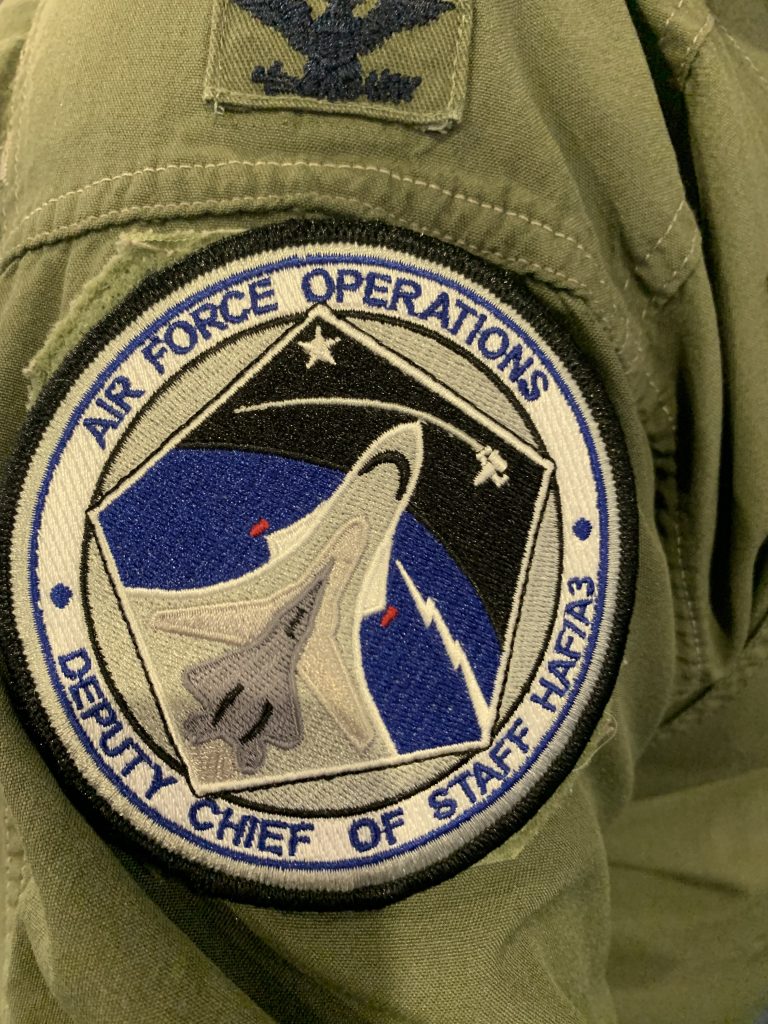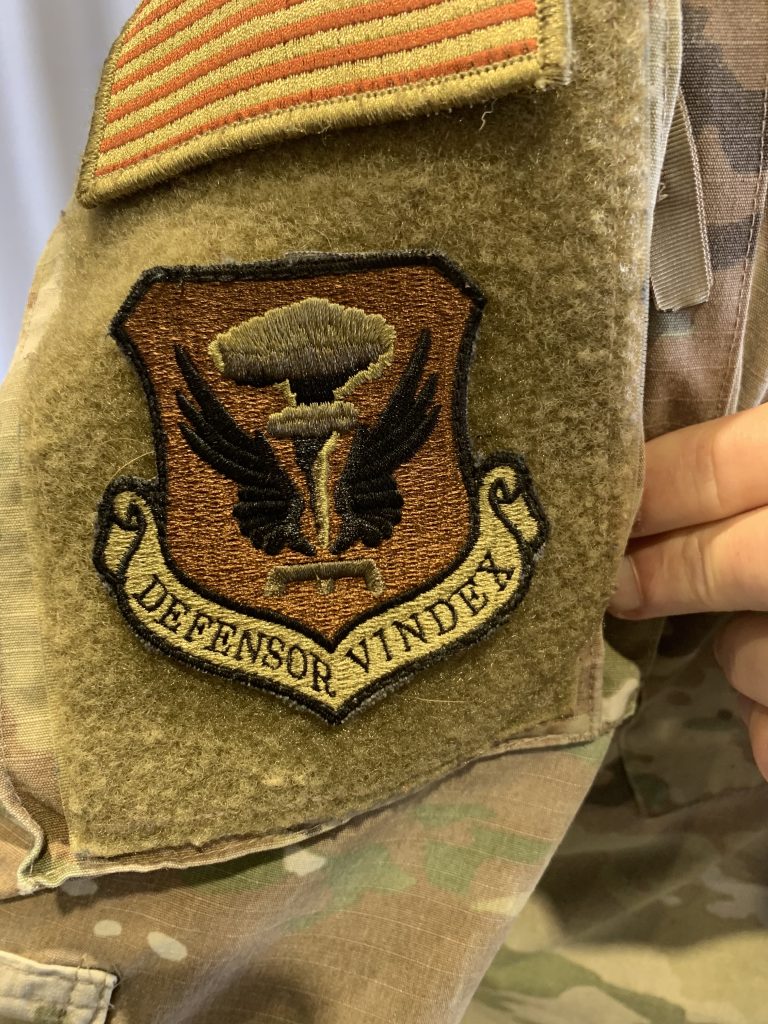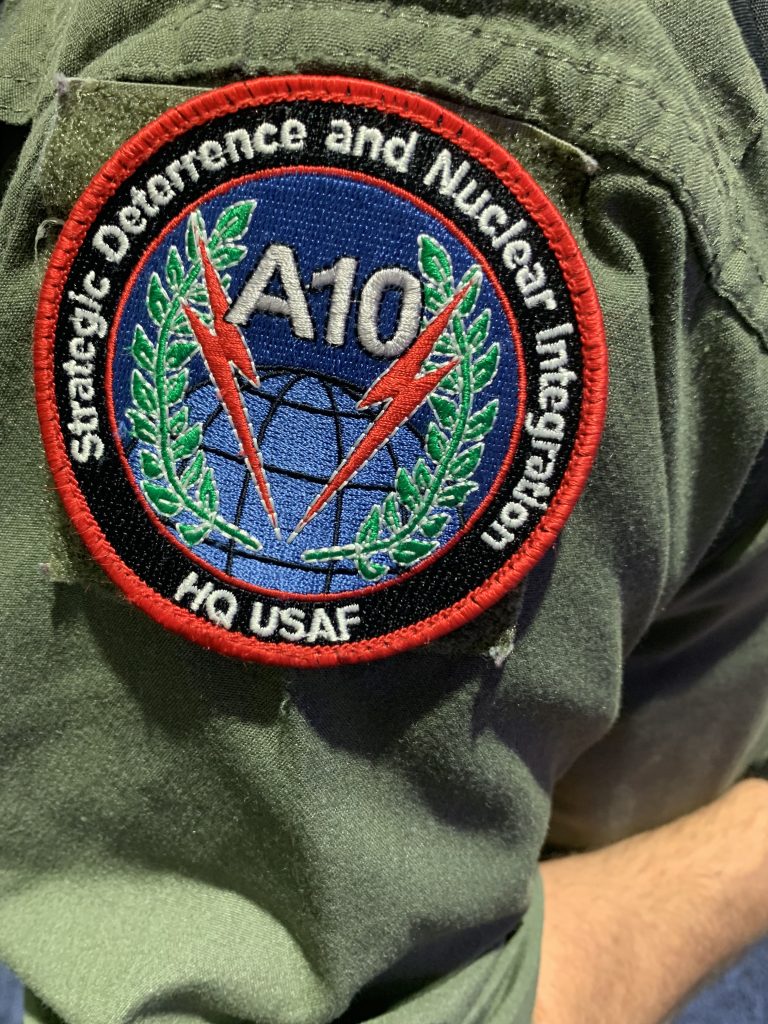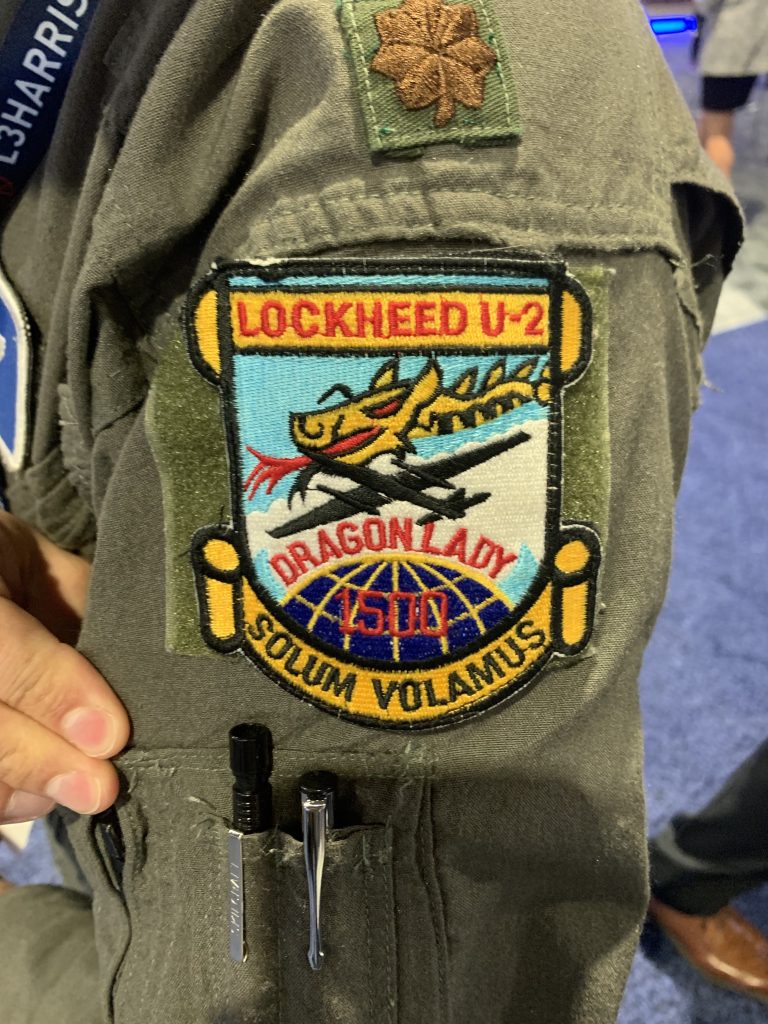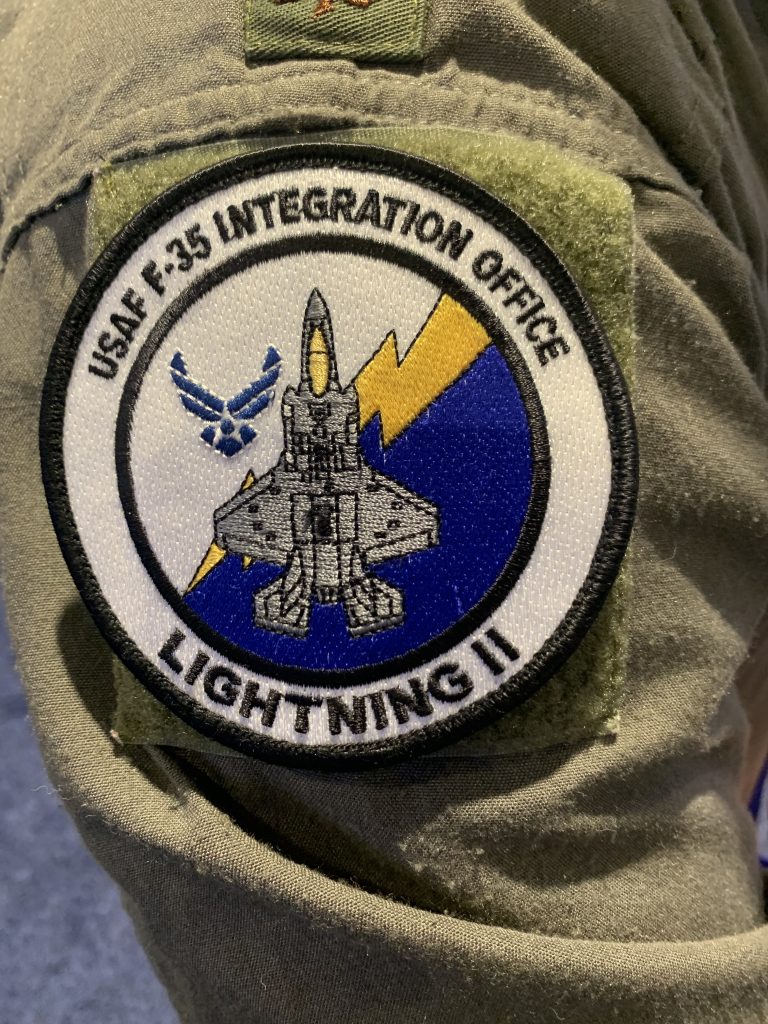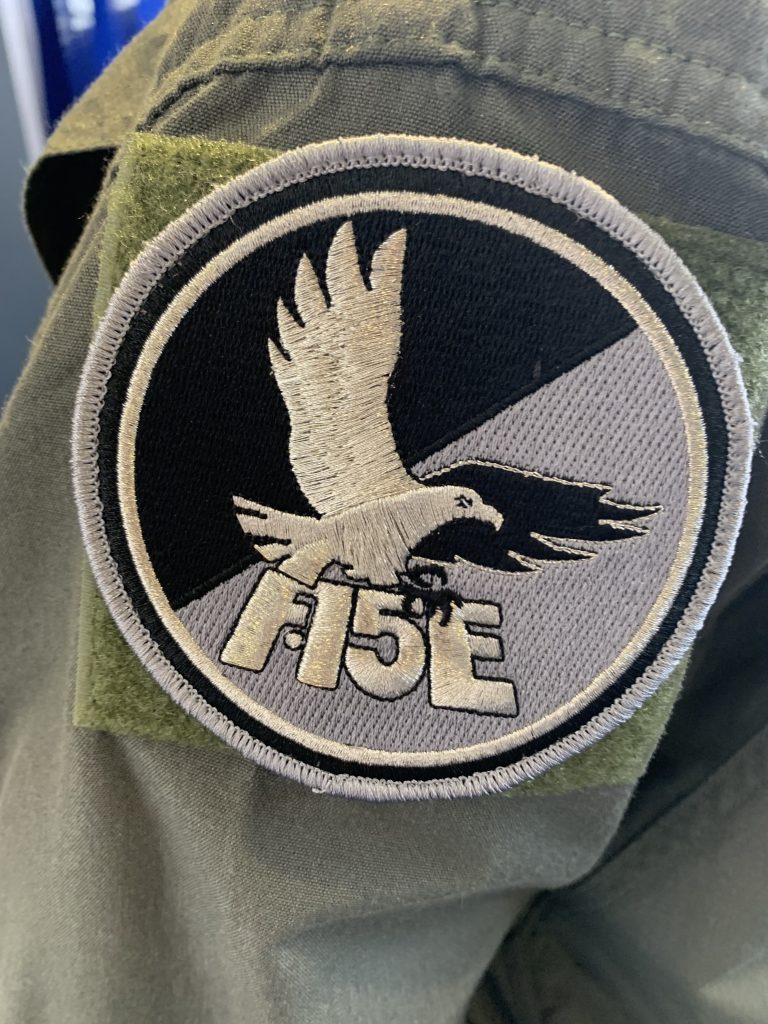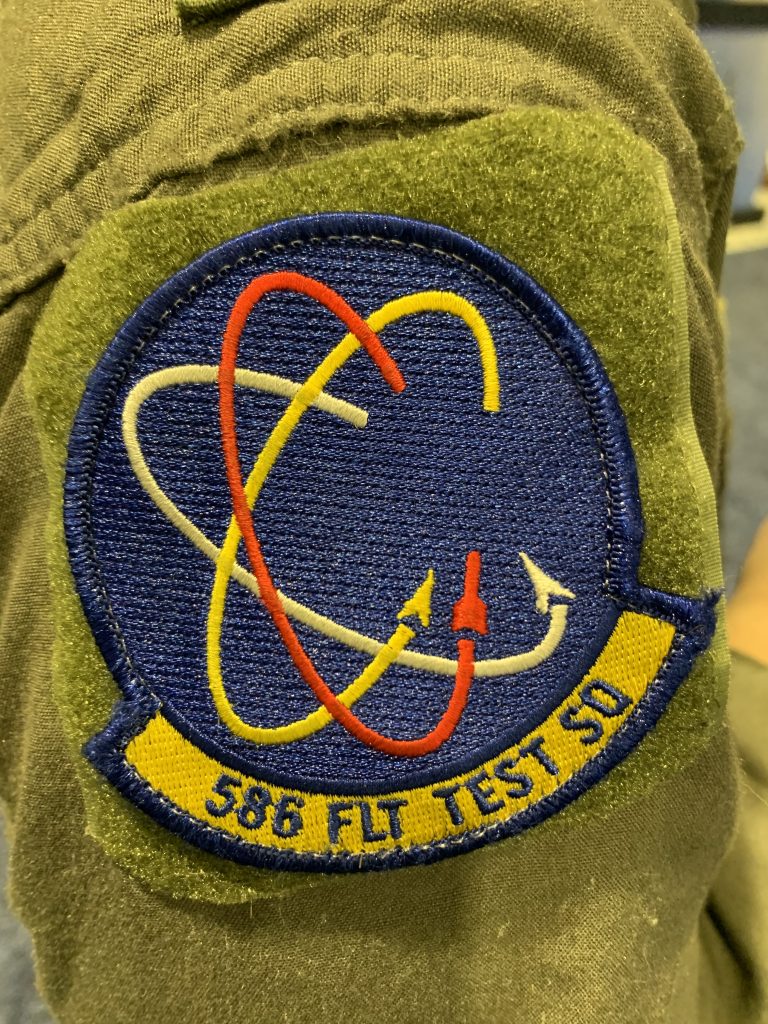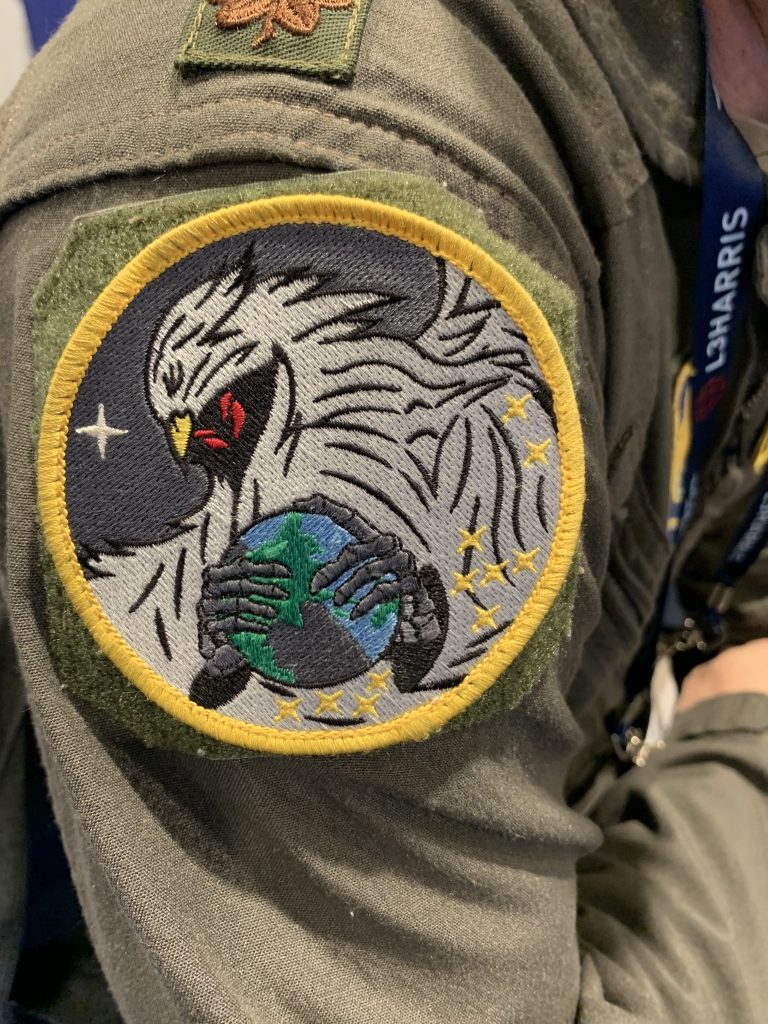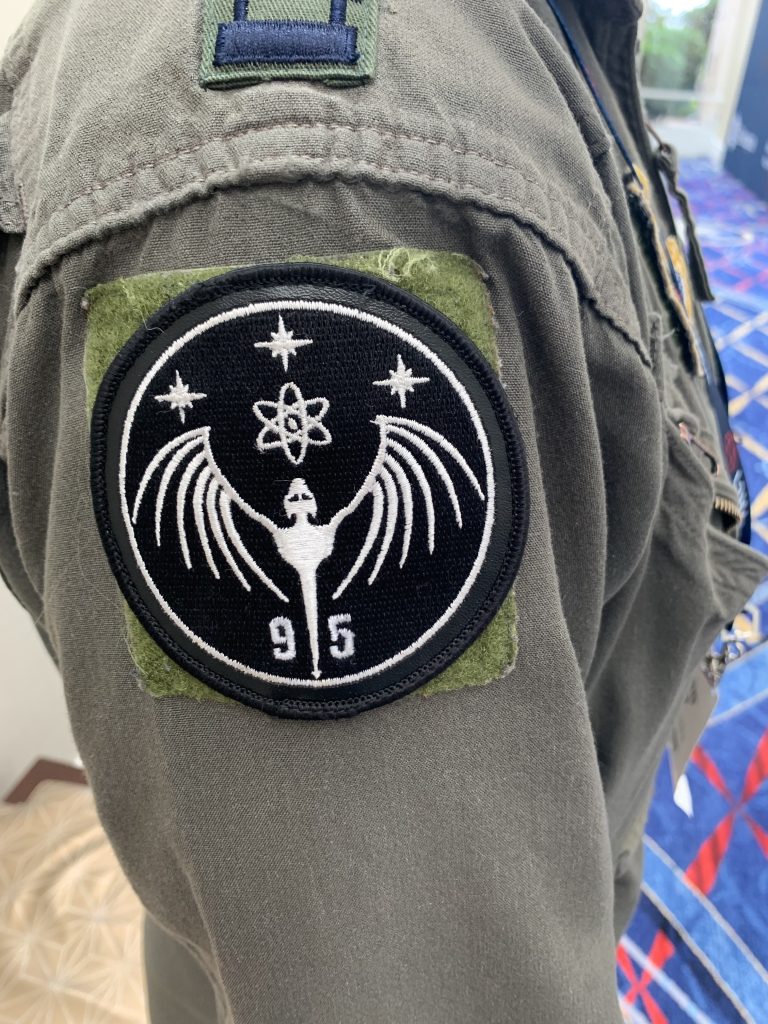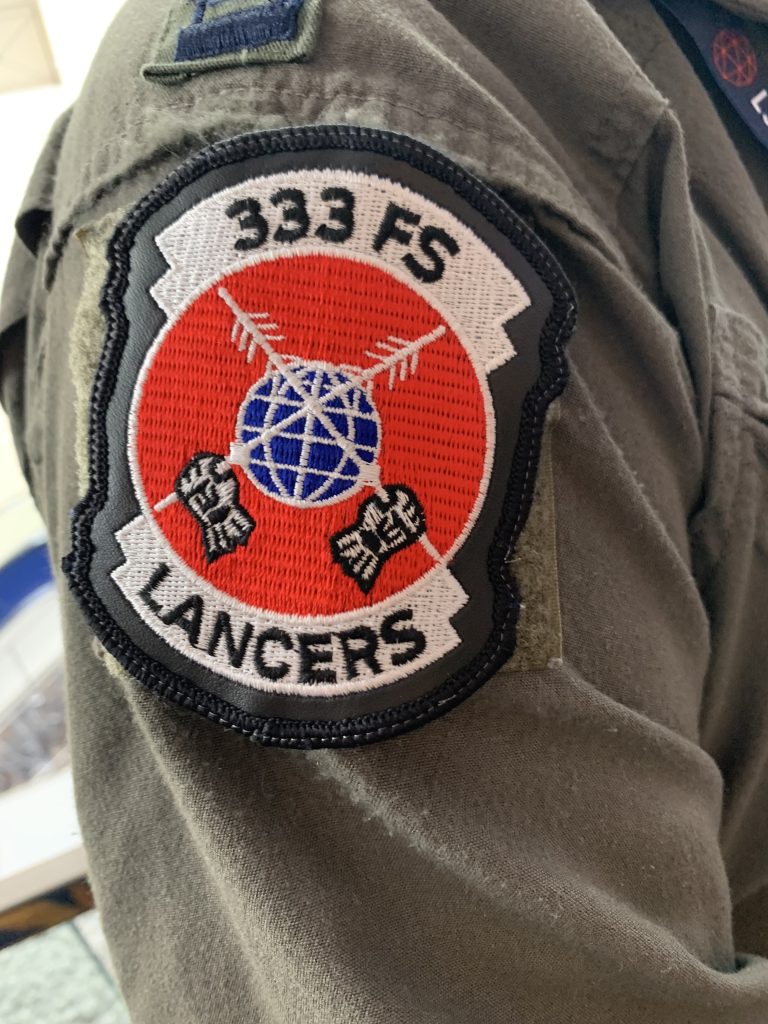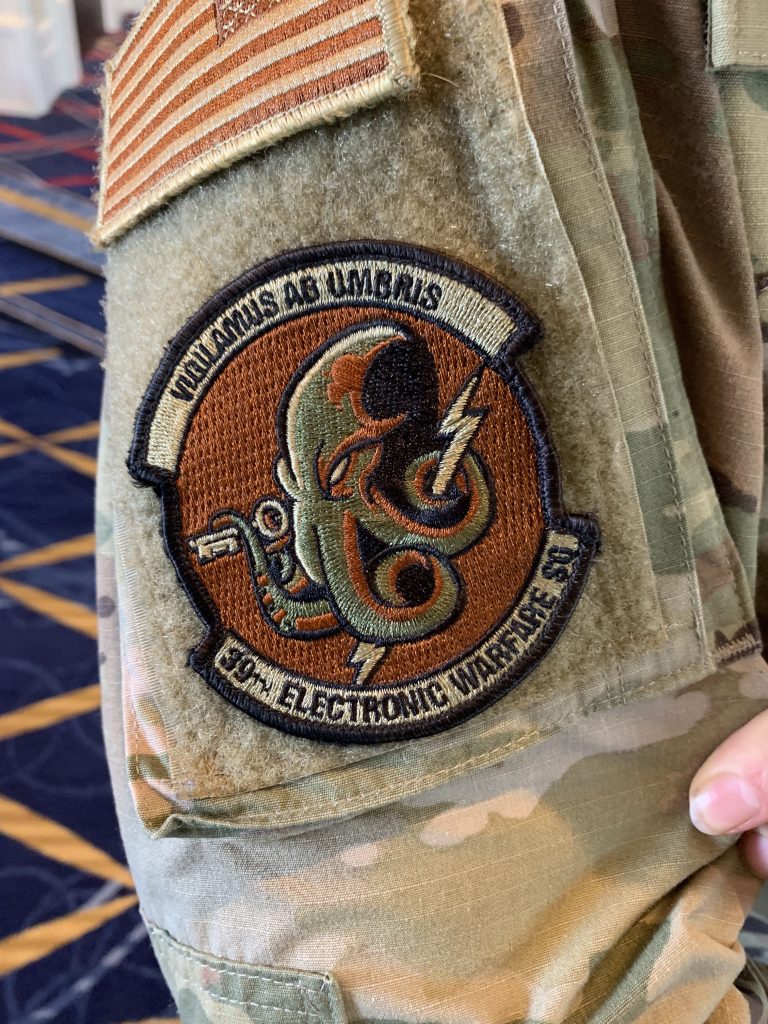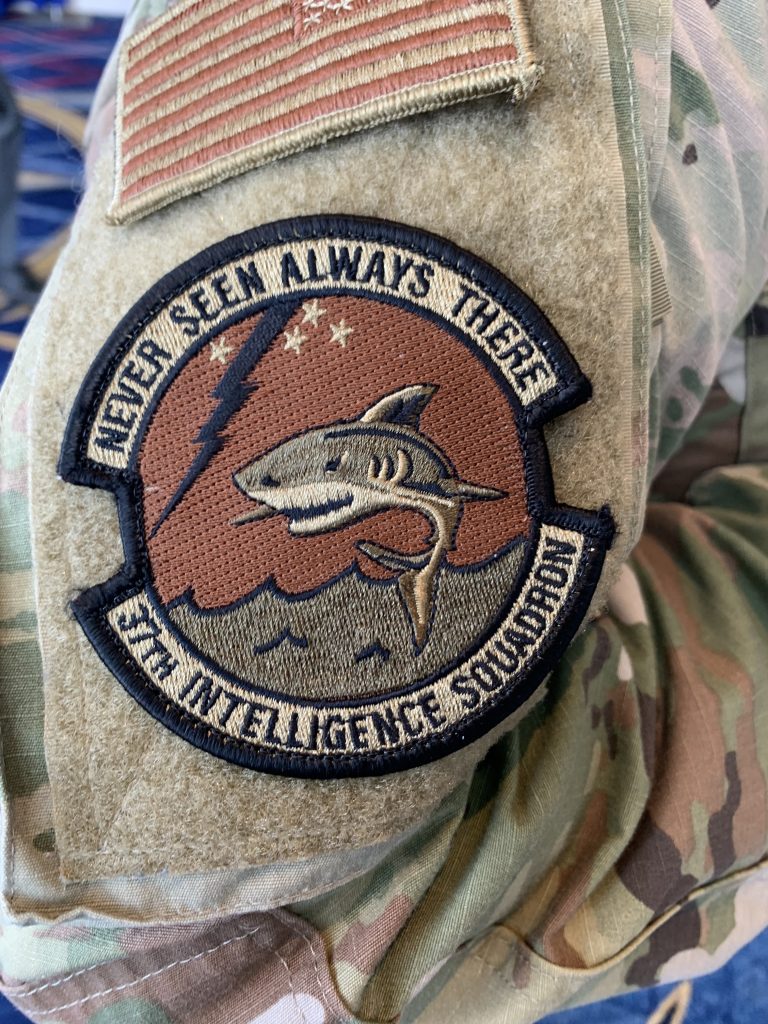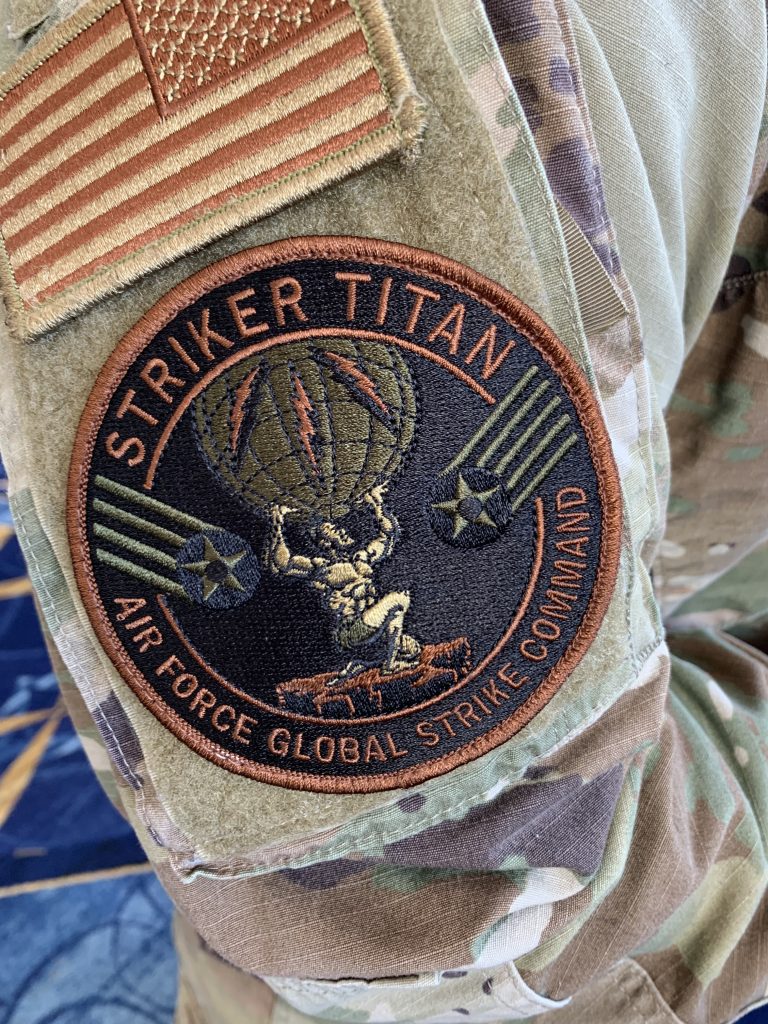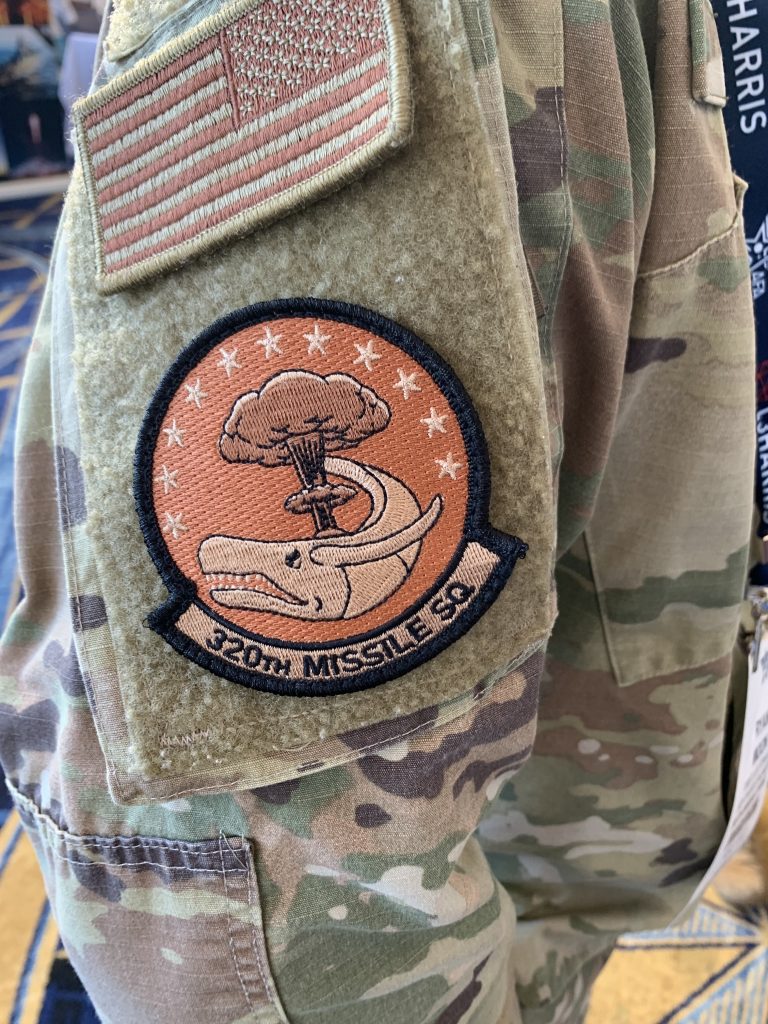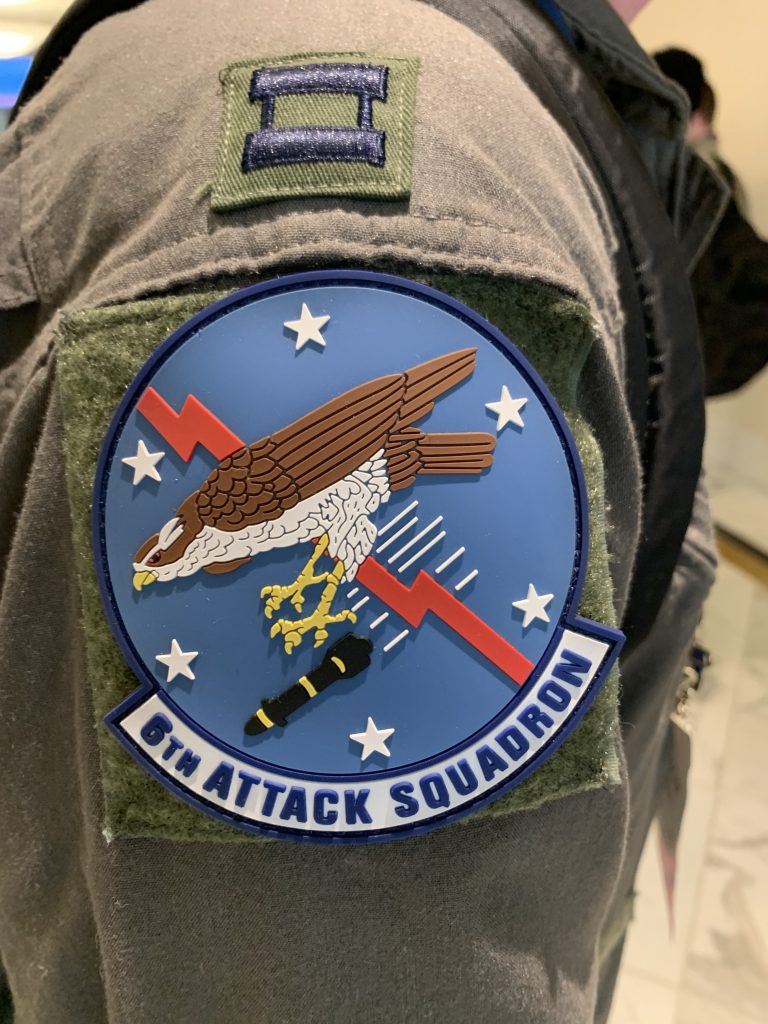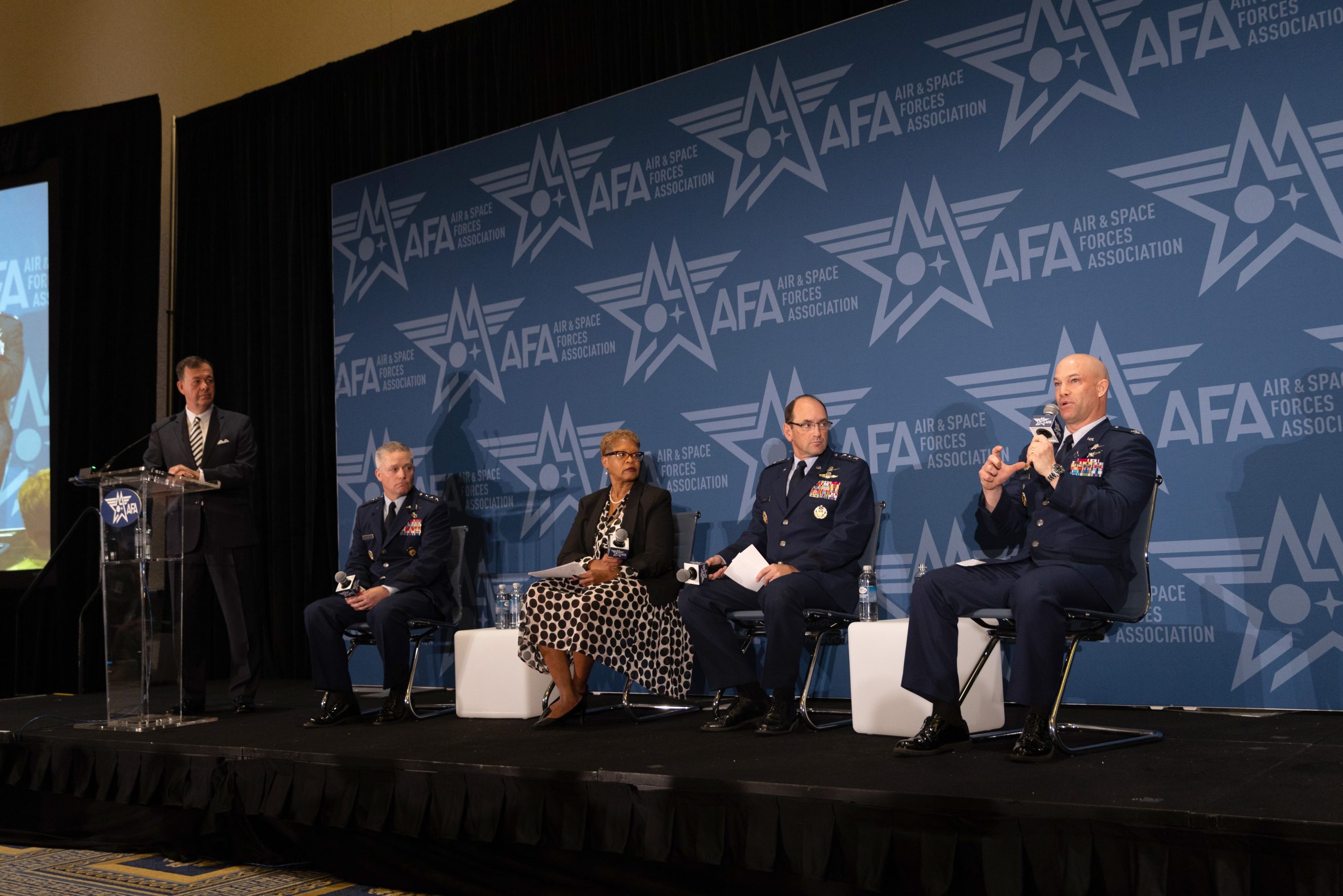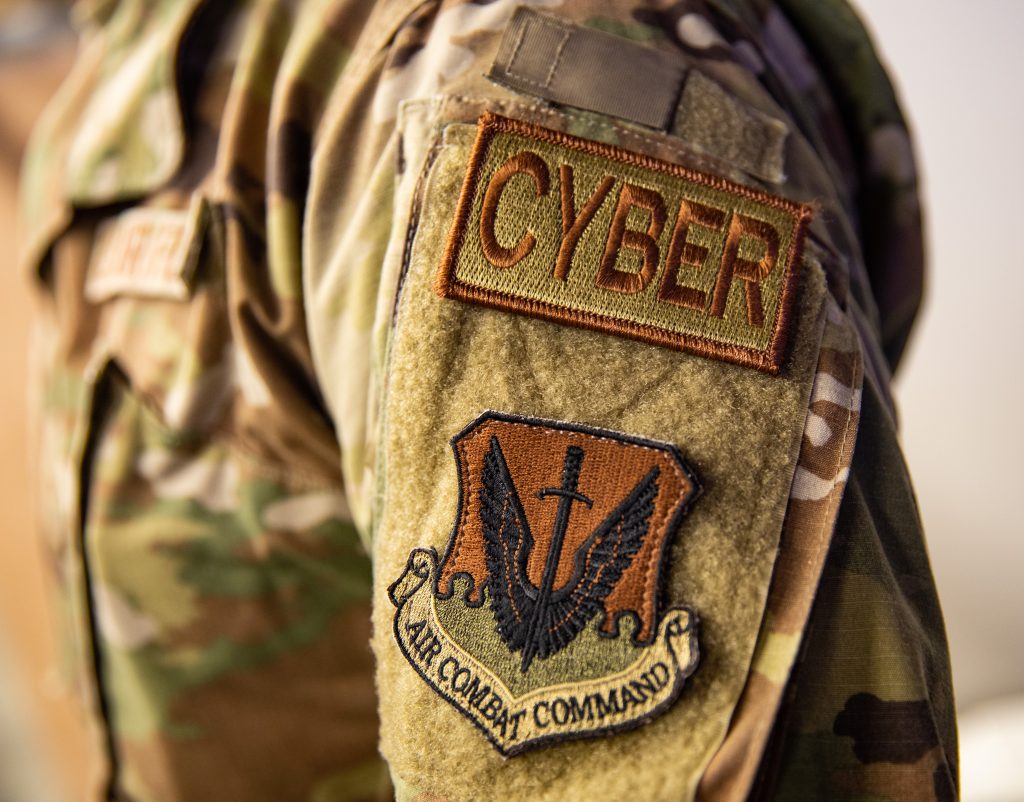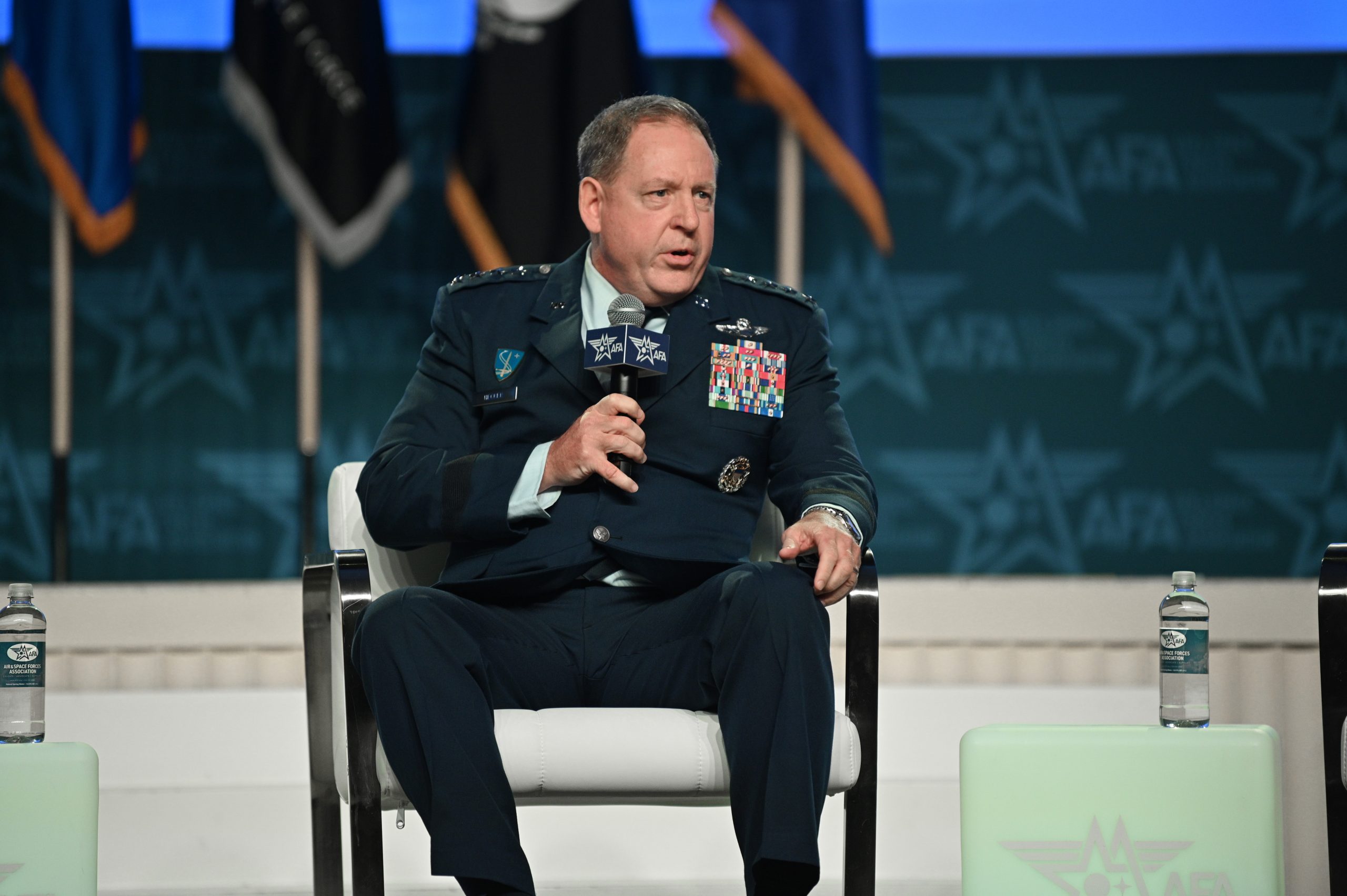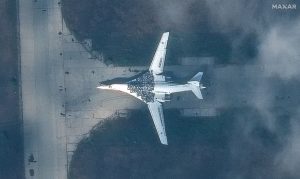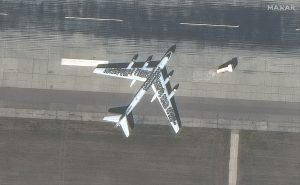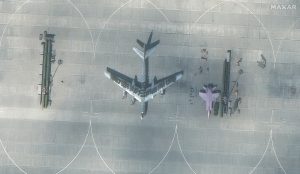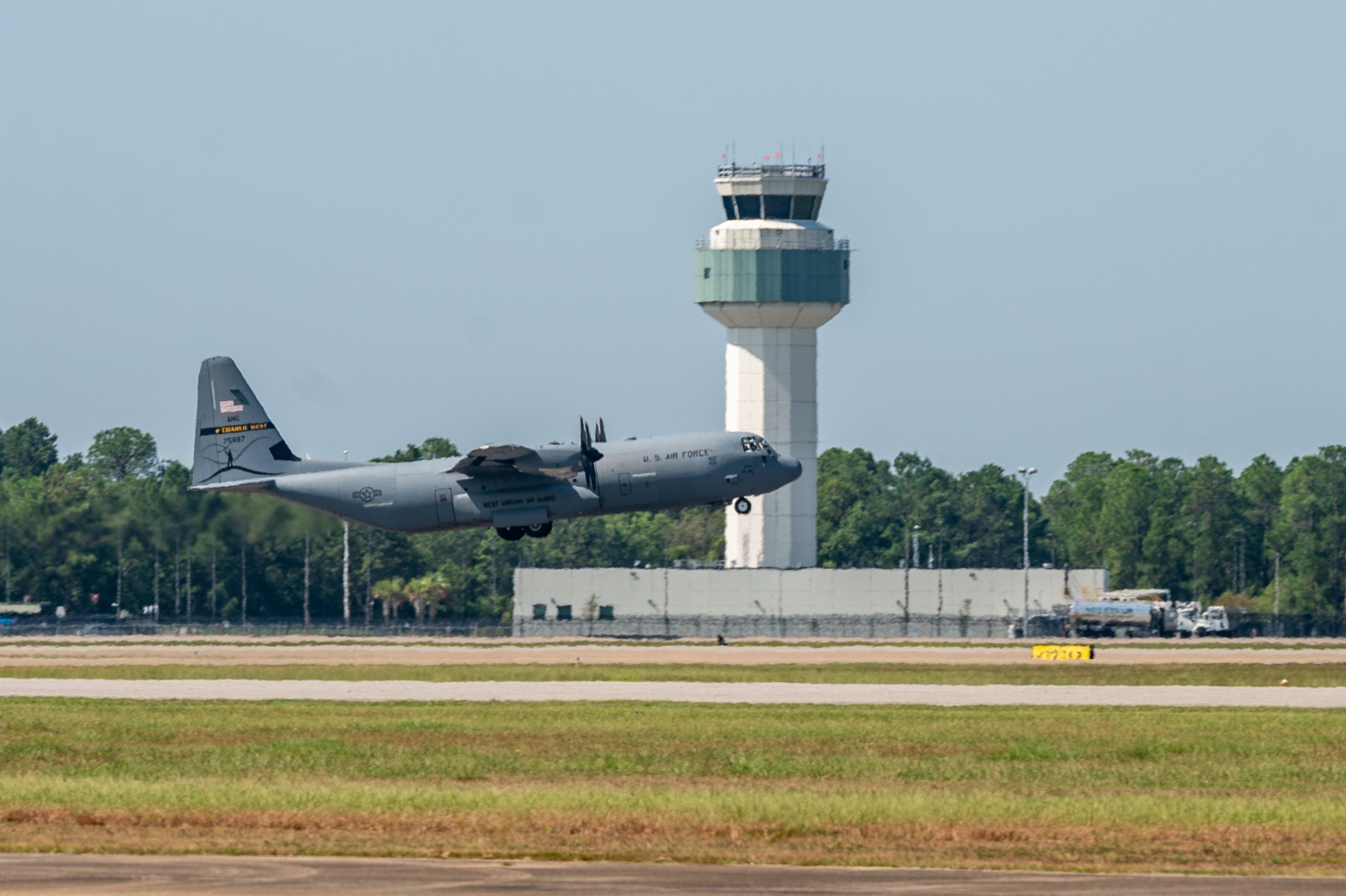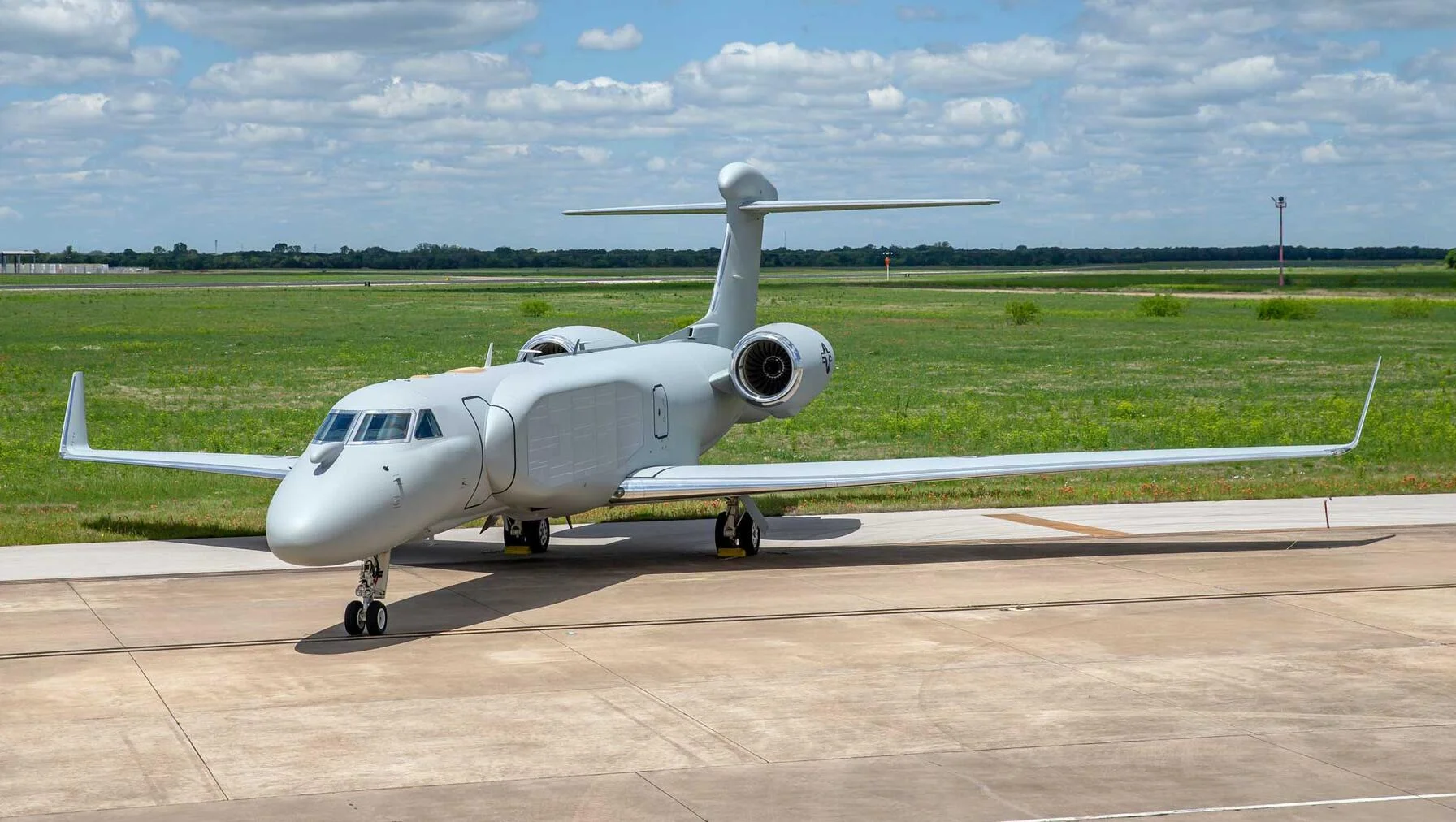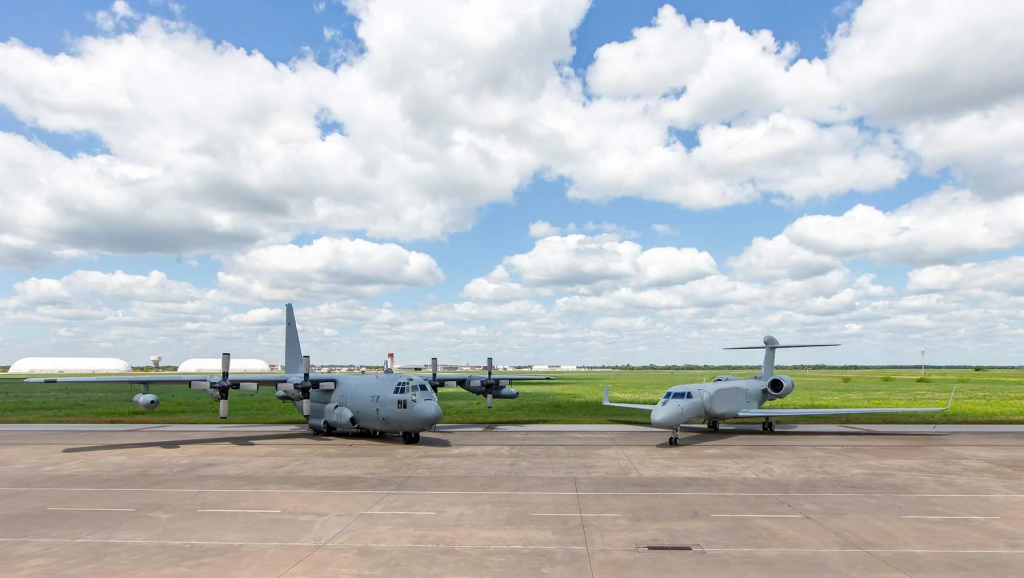For the first time ever, the title of Chief Master Sergeant of the Space Force changed hands Sept. 15, as Roger A. Towberman retired and passed the mantle on to John F. Bentivegna in a ceremony at Joint Base Andrews, Md.
Towberman became the Space Force’s top enlisted member in April 2020, and played an instrumental role in forming the rudiments of a new military service under Chiefs of Space Operations Gen. John W. “Jay” Raymond and Gen. B. Chance Saltzman. His contributions to USSF’s foundational cultural touchstones were many, from unique uniforms to fitness to its unique approach to personnel management.
“He shaped the character, values, and culture of the Space Force and guided Gen. Raymond as they built the Space Force from the time they were the only two members,” said Air Force Secretary Frank Kendall during the ceremony. “’Toby’ has now helped guide the second Chief of Space Operations, Gen. Saltzman and a new Secretary of the Air Force, as we work together to build on the foundation that he and Gen. Raymond started. His contributions have been literally unprecedented and without parallel. Chief Bentivegna, you have some big shoes to fill.”
With Towberman’s leadership and advice, the Space Force has:
- Welcomed in hundreds of transfers from the Army, Navy, and Marine Corps, alongside thousands of former Airmen, and hundreds of new officers and recruits who had no prior military experience
- Developed the service’s first ever human capital plan, “The Guardian Ideal”
- Expanded promotion boards for lower enlisted ranks
- Established its own separate Basic Military Training curriculum
- Adopted new uniforms, ranks, and even a Space Force song.
Along the way, Towberman earned a reputation as a passionate, engaging leader, happy to interact with Guardians on internet forums like Reddit and known to pepper his speeches with self-deprecating jokes, touching personal reflections, and philosophical musings on compassionate leadership and choosing a growth mindset.
All were on full display in his retirement speech—he thanked a long list of mentors, colleagues, and family members, becoming particularly emotional when acknowledging his wife, Rachel Rush, and urging Guardians to push forward in developing the service.
“The world will never prepare you for the task of changing it,” Towberman said. “Change comes from somewhere else. Change comes from who you are. You already know who that is. You don’t need us to tell you. You don’t need us to build you. You need to be you. You need to remember why you raised your hand. You need to remember what you are moving towards, because that’s the Space Force that we’re supposed to have. And if you let what we did yesterday keep that from you, that’s on you.”
Towberman also praised his successor, saying “I couldn’t imagine handing over this very important project I’ve been working on to anybody else.”
Bentivegna and Towberman have known each other for years, bringing very different military backgrounds to their roles. Towberman started in the Air Force as a cryptologic linguist and intelligence analyst flying on RC-135s, Bentivegna was trained as a maintainer, before spending most of his career in space operations.
That gives him an advantage Towberman didn’t have. “I’ve been in the space business for the preponderance of my career,” Bentivegna told reporters at AFA’s Air, Space & Cyber Conference a few days before taking on the CMSSF job. “So as I go out and advise Gen. Saltzman and have a chance to engage with Guardians, something I want to try and leverage, which may be a little bit of a different messaging point from Chief Towberman, is some of the time I spent doing space operations as an Airman in the Air Force.
“Chief Towberman had that broad [experience] working within the Air Force,” said Bentivegna, known to many as B9, in reference to the letters in his last name. “So what he’s laid out from a broader perspective and now me now coming in with my space understanding, I think is going to put the service in the right place.”
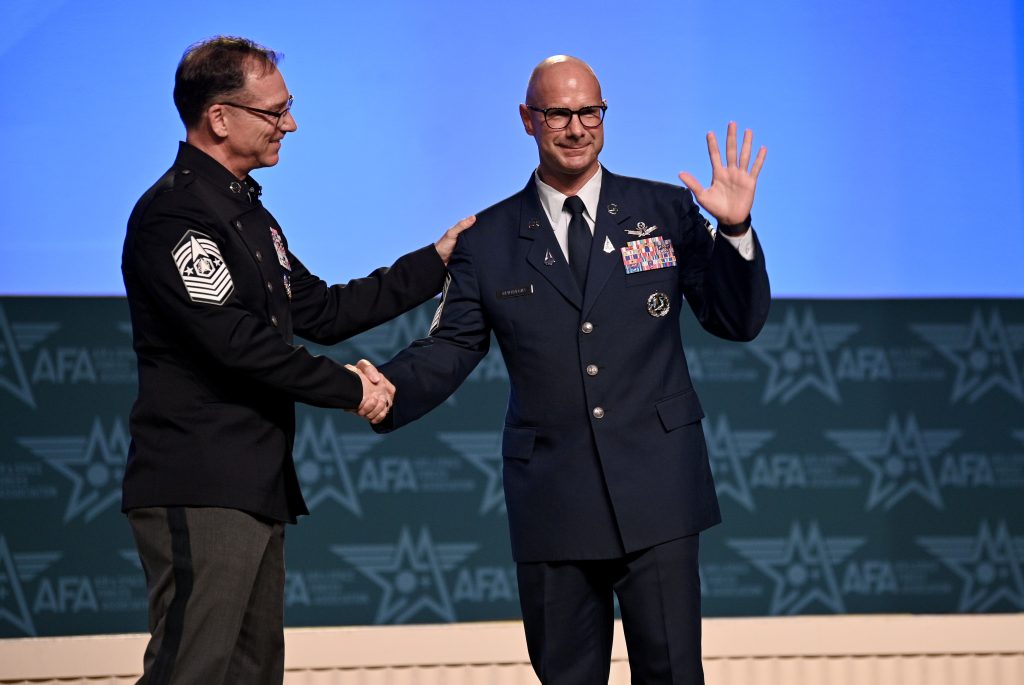
Bentivegna reflected on his early years in uniform, when he was a “bit of a knucklehead,” and as a “late bloomer” who came to recognize his ability to lead and work only after time on the job—a descriptor Towberman has used for himself. B9 credited his wife and several professional mentors for helping him develop and mature, and pledged to work on behalf of Guardians to see they get the training and skills needed to succeed.
“The space domain has evolved from a benign environment,” Bentivegna said. “The intentions of several state actors remain unclear, and the unwanted threat of great power conflict is real. To successfully compete in this domain, we demand your willingness to learn and think outside the box, make uncomfortable decisions, and demonstrate a bias for action. We need you to be comfortable with the unknown and cultivate a service where change is not a distraction or a disadvantage.”
At the AFA conference, Bentivegna said he’d spend his first 90 days listening to Guardians and Airmen at commands worldwide, taking note of what he learns and using that to shape an agenda for the time that follows.
“I have an opportunity to gather with the senior enlisted leaders in the Space Force and the Airmen who are assigned to the Space Force this week, and I’m going to listen,” Bentivegna said. “‘Hey, what’s going on in the field? The programs and policy we’re working towards, what are the ones that we’ve got to get it across the finish line and need to advocacy within the building? What are the ones that we need to continue to look at?’”
